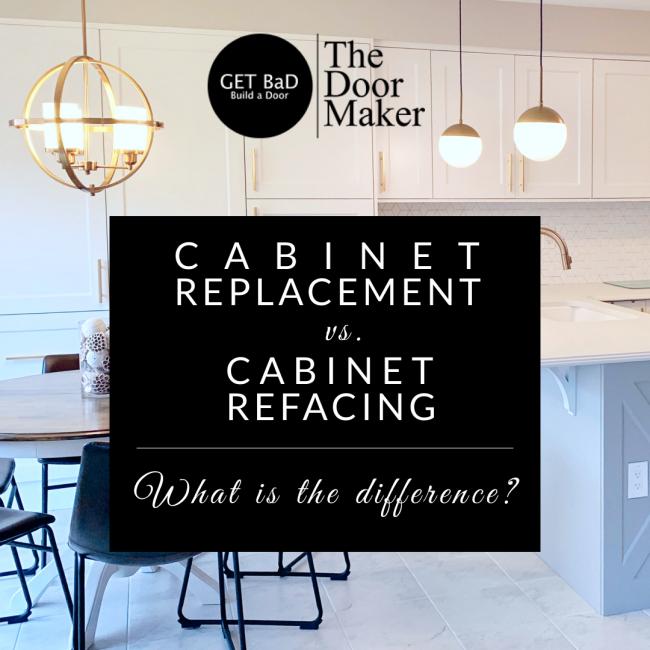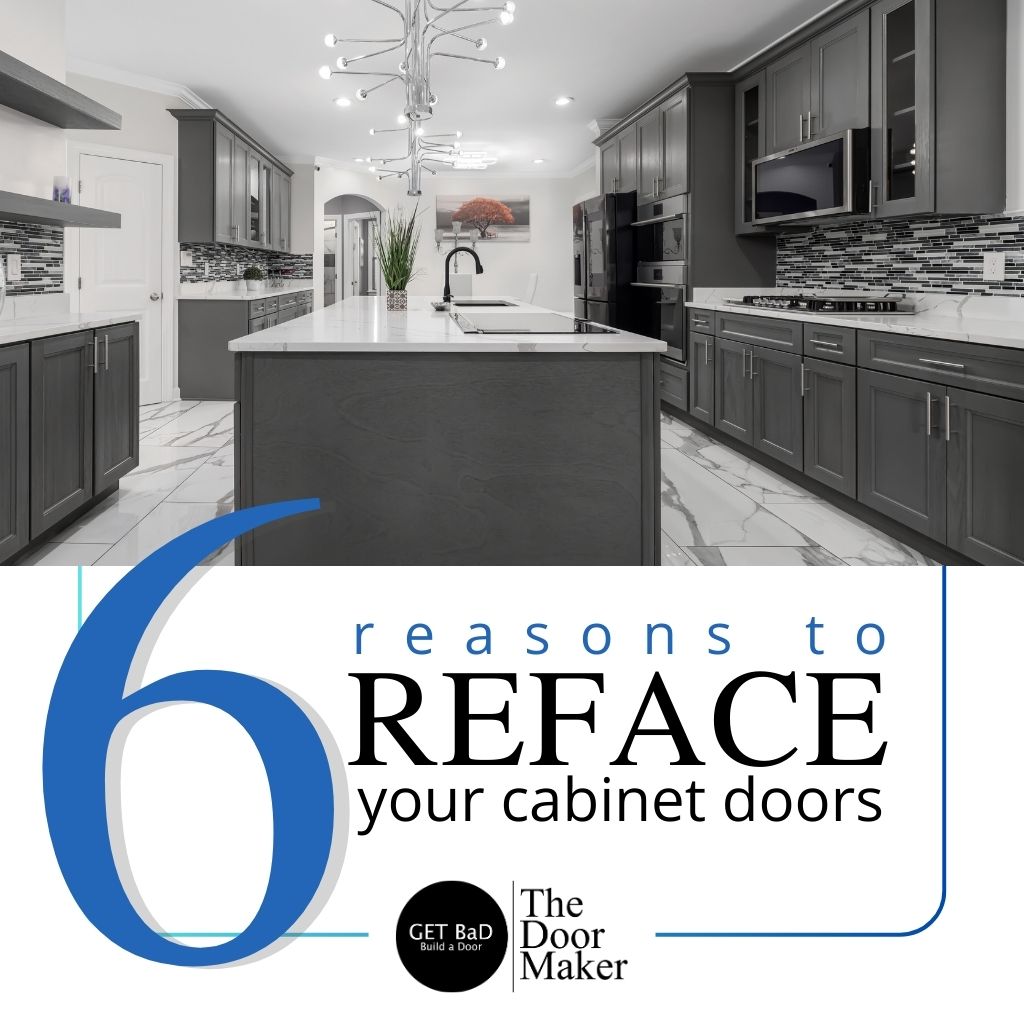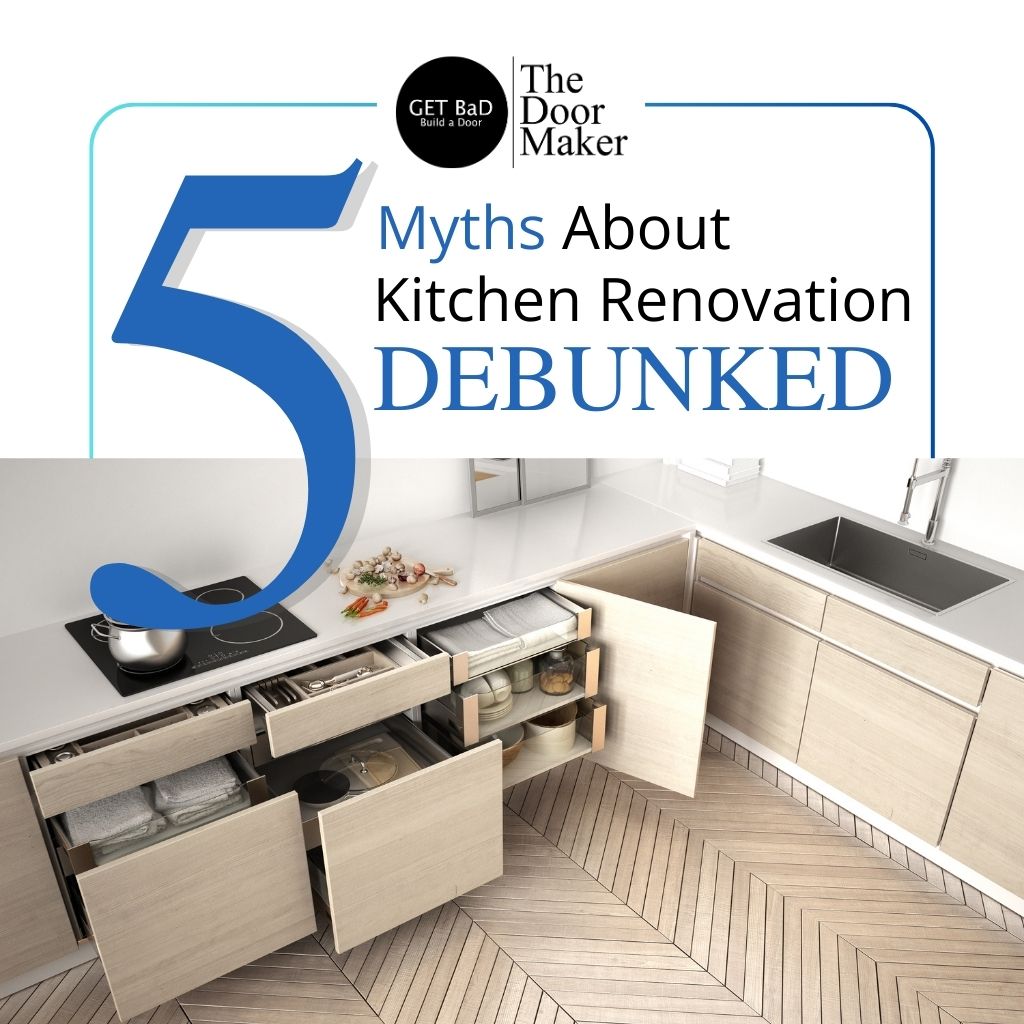Cabinet refacing and cabinet replacement are two terms often used interchangeably. However, if you dive into the details, you’ll see that the difference is quite significant and lies mostly in the amount of time and effort involved.
Both cabinet refacing and replacement are equally popular kitchen remodelling options as they help update the kitchen’s look and make it feel more modern and fresh. In this blog, we will compare and review some of the key differences between the two.
What Is Cabinet Replacement?
Kitchen cabinet replacement involves removing the existing cabinets completely and replacing them with new ones. Along with replacing kitchen cabinets completely, you get to choose new kitchen countertops as well as change your kitchen layout. For this reason, kitchen cabinet replacement is a more expensive option than refacing.
What Is Cabinet Refacing?
Cabinet refacing is replacing the doors and drawer fronts of the cabinets without replacing the entire cabinet. Some homeowners complement it by veneering the cabinets and installing new hardware to give their kitchen a totally new look, or simply installing new hardware. Installing kitchen cabinet replacement doors is considered more cost-effective and less disruptive than replacing the entire kitchen.
4 Key Differences Between Cabinet Replacement & Cabinet Refacing
While the outcome is similar in both cases, e.g. newer-looking cabinets, there are a few key differences which set cabinet replacement and cabinet refacing apart. These include:
- Cabinet replacement allows you to redesign your kitchen completely. If you always wanted to have a kitchen island, complete cabinet replacement is your chance to do so. Cabinet refacing does not give you the liberty to change your kitchen layout.
- Cabinet refacing is a more affordable option that can give your kitchen a fresh look and boost your home’s resale value. In addition, cabinet refacing is not as disruptive and messy as replacing the entire cabinetry.
- Cabinet replacement is best for kitchens which are falling apart or have undergone extensive wear and tear. Refacing such cabinets is not recommended for the same reason.
- Cabinet refacing is considered more environmentally friendly than complete kitchen replacement as less material goes to waste.
Can You Do It Yourself?
When it comes to planning a successful DIY kitchen renovation, both cabinet replacement and cabinet refacing require a certain degree of skill and dedication. However, do-it-yourself cabinet refacing is considered more DIY-friendly as it involves less work and does not require a great level of expertise. You can easily learn to unmount old cabinet doors and mount new ones by watching a few YouTube videos.
There are companies that offer cabinet refacing services. However, expect to pay a fee for the convenience of having a professional install new kitchen cabinet replacement doors.
DIYing full kitchen replacement is certainly more difficult as it is more laborious and resource-consuming than cabinet refacing. However, if a totally new kitchen is what you’re after, then complete kitchen renovation is what you should consider.
The Takeaways
In closing, cabinet replacement and cabinet refacing are both viable kitchen remodelling options, although each has its own set of pros and cons. We hope this blog can serve you as a guide to the two kitchen remodelling options and help you make an informed decision.




